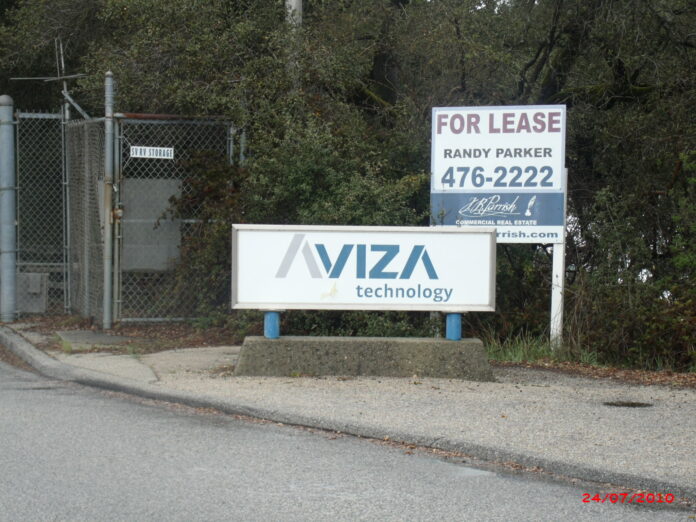The former site of Avisa Technology, located in a small valley just off the main entrance to the Sky Park Community Center at the end of King’s Village Road, has been the site of an in-depth study for a possible zoning change that will allow high density housing. A Draft Environmental Impact Report (Draft EIR) was released for public review on March 1st, and the City of Scotts Valley is soliciting comment on the document until April 16, 2018.
There are no specific development plans under consideration for the property. The 285-page Draft EIR analyses the impacts of changing the General Plan land use designation and zoning from Light Industrial to Medium High Density Residential and Open Space. If the Draft EIR is approved and certified, the new zoning will allow the construction of approximately 84 housing units on the 43-acre project site.
“The continued industrial use of the property doesn’t fit the neighborhood any longer,” said Joe Appenrodt, managing partner of the 440 Kings Village LLC, the owner of the property. “We think relatively high density housing will better conform to the existing neighborhood.”
The Draft EIR is primarily an information sharing document- it does not by itself determine if environment impacts are too severe for project approval. The document presents the analysis and ranks the significance of environmental impacts, and recommends mitigation measures to reduce those impacts. Comments are solicited from the public on the quality of the analysis and the efficacy of the recommended mitigation measures.
The Draft EIR identifies only one “significant and unavoidable impact” that cannot be reduced by mitigation measures: traffic congestion on Mt. Hermon Road, La Madrona Drive and south-bound on-ramps to Hwy 17. Traffic impacts are measured by delays and Levels of Service designations at various intersections. The additional traffic generated by the housing development is expected to degrade levels of service at these intersections, an impact that will remain “significant and unavoidable.”
The number of daily automobile trips the 84-unit project will generate is estimated to be about 896 trips, with 69 at the morning peak hours and 90 at evening peak hours. However, these traffic impacts are largely offset in the analysis by the traffic generated by the existing use of the property, as if most of the industrial facility was still in full operation.
Appenrodt explained the traffic offset for the existing use of the property was based on the current, roughly 60 percent lease-up of existing buildings, which is misleading. At its height of operation, between 500 and 700 workers were employed at the facility, and the traffic generated by proposed housing will be less than running the industrial site at full capacity, according to Appenrodt.
“The reality is that full use of the site as an industrial facility would have far more impacts, and more significant impacts, than housing,” Appenrodt said.
Other significant impacts are identified, particularly impacts to wildlife and biological resources, but with the mitigation measures specified, all other impacts are reduced to “less than significant.” These include Focused Surveys and Relocation Plans for Santa Cruz Kangaroo Rat and San Francisco Dusky Footed Woodrat, both of which are “species of concern” to the California Department of Fish and Wildlife.
The Draft EIR considers various project alternatives and compares impacts. The “no project” or “open space alternative” of demolishing the existing buildings and paved areas and retaining the property as passive, public open space was rejected because it is not financial feasible for the owner of the property.
Other alternatives included a “Reduced Development Alternative” of approximately 52 housing units, which does not significantly reduce traffic impacts reported for the 84 unit project. There is also a “High-Density Development Alternative” studied that would allow the development of up to 240 housing units, that does significantly worsen the already identified “significant and unavoidable” traffic impacts of the proposed 84 housing units.
Semiconductor manufacturing took place on the site from about 1960 to 2011, with Avisa Technology one of the longest owners of the property. Avisa Technology eventually decommissioned the facility and sold the site in 2011. The site has been on a national priorities list, or list of “Superfund” sites, maintained by the U.S. Environmental Protection Agency for clean-up of known hazardous pollutants, with site clean-up practices beginning in 1987.
According to the Draft EIR, the site has undergone more than 25 years of groundwater extraction and treatment as well as “soil flushing” in accordance with the EPA’s clean-up requirements. The Draft EIR reports that recent testing indicates the “groundwater contaminants of concern have been remediated to acceptable levels for industrial uses.”
“We look forward to a healthy discussion with the city and the community to see what’s appropriate for the site,” Appenrodt said. Increasing the level of environmental cleanup to acceptable levels for residential use will require more time and more money, according to Appenrodt.
Depending on the outcome of this proposed change of zoning, decisions will be made regarding the continued clean-up of the site to residential standards.
After the public comment period for the Draft EIR is closed on April 16, credible questions and comments will be responded to in the final edition of the EIR. A Planning Commission meeting to consider the certification of the final EIR and the zoning change, and subsequent City Council hearing have not yet been scheduled.












